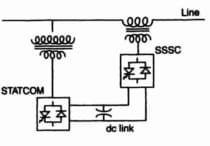 |
| Marine Electrical MCQ |
1. ESD stands for which type of boiler__________.
A. External super heater D-type
B. Emergency shutdown Boiler
C. Extreme Super heat type
D. External Super heat De-superheater type
2. In order for microbiological growths to thrive in a fuel tank, it is necessary for______.
A. high temperatures to exist
B. low temperatures to exist
C. small amounts of water to be present
D. large amounts of water to be present
3. Marine boilers burning H.F.O. face a problem of cold corrosion due to high sulphur content. The minimum flue gas temperature within any boiler part is kept above the due point of H2SO4. The actual dew point of H2SO4 in flue gases depends on the:______
A. Boiler furnace temperature
B. Ambient air temperature
C. Boiler operating pressure
D. HFO sulphur content and moisture in combustion air
4. Which of the following statements is true?
A. The rotary vane type steering gear generally operates at higher oil pressures than the ram type.
B. The ram type steering gear generally operates at higher oil pressures than the rotary vane type.
C. Both ram type and rotary vane type steering gears generally operate at similar oil pressures
D. None of the above
5. 3-ballast pump is being used to deballast a fore peak tank which is full. It is seen that suction pressure is positive, and discharge pressure is very low compared to rated discharge head. It indicates that_________.
A. Pump is not operating satisfactorily and pumping capacity is too low
B. Pump is not operating satisfactorily and pumping capacity is higher than rated, throttling of discharge valve is required
C. Pumping capacity is not affected by suction and discharge pressures
D. Pump is operating normally
6. In a reciprocating pump the direction of flow depends upon________.
A. Direction of rotation of the pump
B. Position & fixing of suction and discharge valves
C. High pressure to low pressure
D. Whether pump is single acting or double acting
7. If the direction of rotation of a gear pump is reversed due to change in-phase sequence, what happens when the pump is started?
A. Direction of flow remains the same
B. The pump will get damaged due to overpressure on suction side
C. Pump relief valve will be lifted
D. The direction of flow will be reversed
8. Which of the following cause cavitations_________.
A. Low discharge pressure
B. Throttling the suction valve
C. Low water level in the wet well
D. High discharge pressure
9. How is the concentration of dissolved oxygen in the feed water of an auxiliary boiler maintained at acceptable limits?
A. Feed water is cycled through a DC heater.
B. Feed water is treated with phosphates.
C. Oxygen is liberated in the three-stages of feed water preheating.
D. Oxygen is liberated by maintaining the highest practical feed water temperature
10. Prior to lighting off a cold automatically fired auxiliary boiler, you should________.
A. check and regulate the water level
B. close the air cock once fires are lit
C. blow down the Gage glass
D. crack the steam stop to assure protective steam flow
11. Steam temperature control for the ESD-II boiler is achieved by__________.
A. Fitting a de-superheater between 1st & 2nd passes of super heater
B. Fitting an attemperator between 1st & 2nd passes of super heater
C. Gas dampers in boiler uptake
D. Bypassing the super heater
12. If the combustion control system of an automatically fired auxiliary boiler fails to sustain burner ignition after a normal shutdown, you should check for a/an______.
A. faulty photocell detector
B. low steam pressure
C. high voltage on the ignition electrode
D. open air damper
13. Which of the following conditions is responsible for the fuel oil to atomize when using a steam atomizer in an auxiliary boiler?
A. Expansion of the steam in the furnace.
B. Expansion of the steam in the whirling chamber.
C. Expansion of the steam in the orifice plate.
D. All of the above.
14. Shaft tunnel requires_______.
A. drain
B. escape trunk
C. water tight door
D. all the above
15. The function of a de-superheater is to_________.
A. Protect super heater from overheat
B. Control super heater steam outlet temperature
C. Increase the efficiency of the boiler
D. Reduce steam temperature for auxiliary uses after steam super heater






0 Comments
If you have any doubt, feel free to ask.